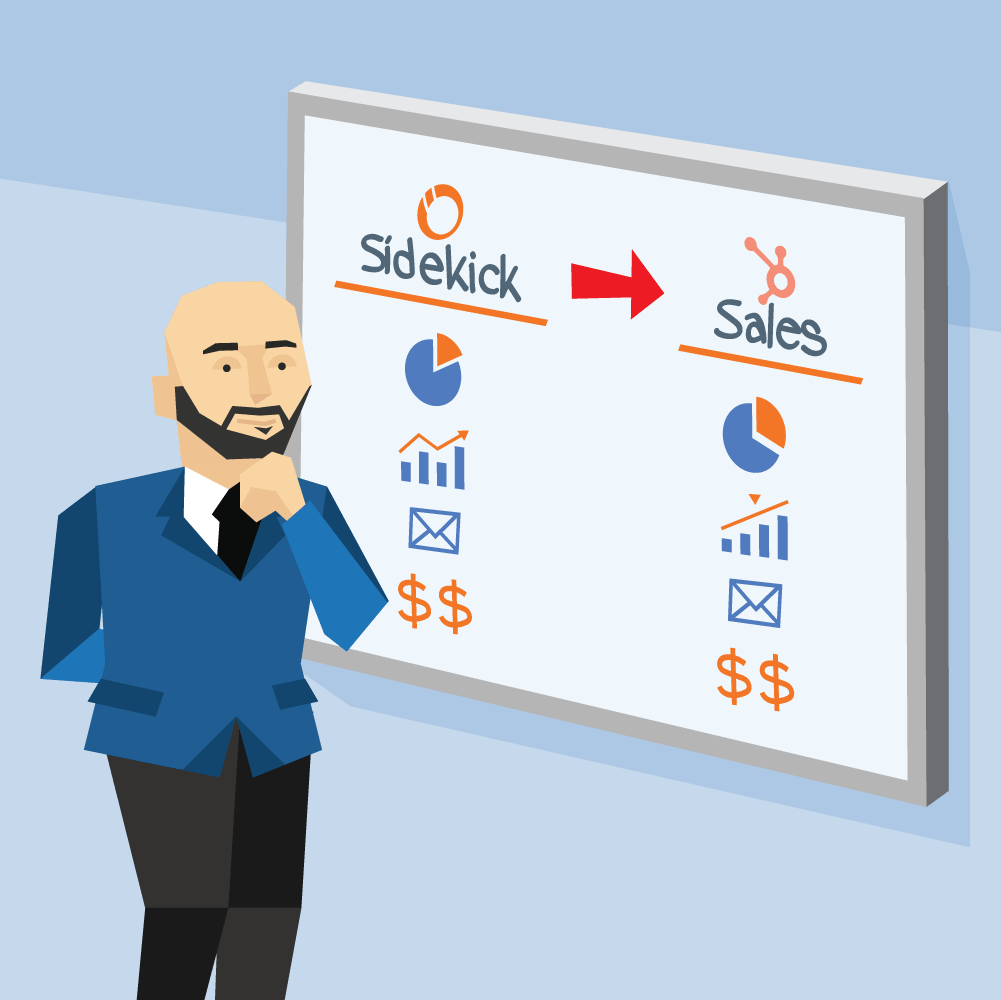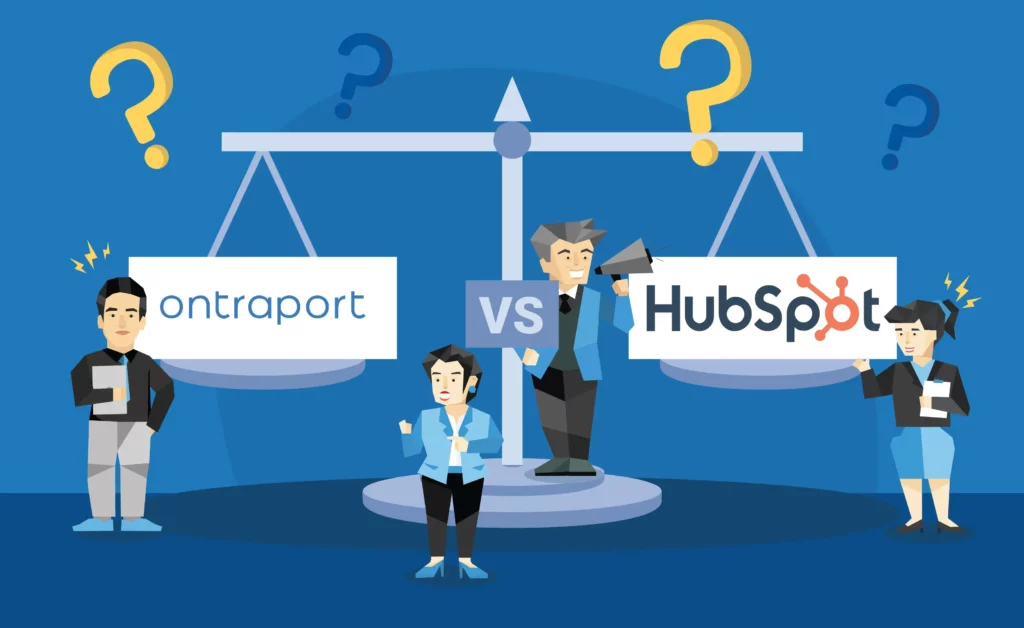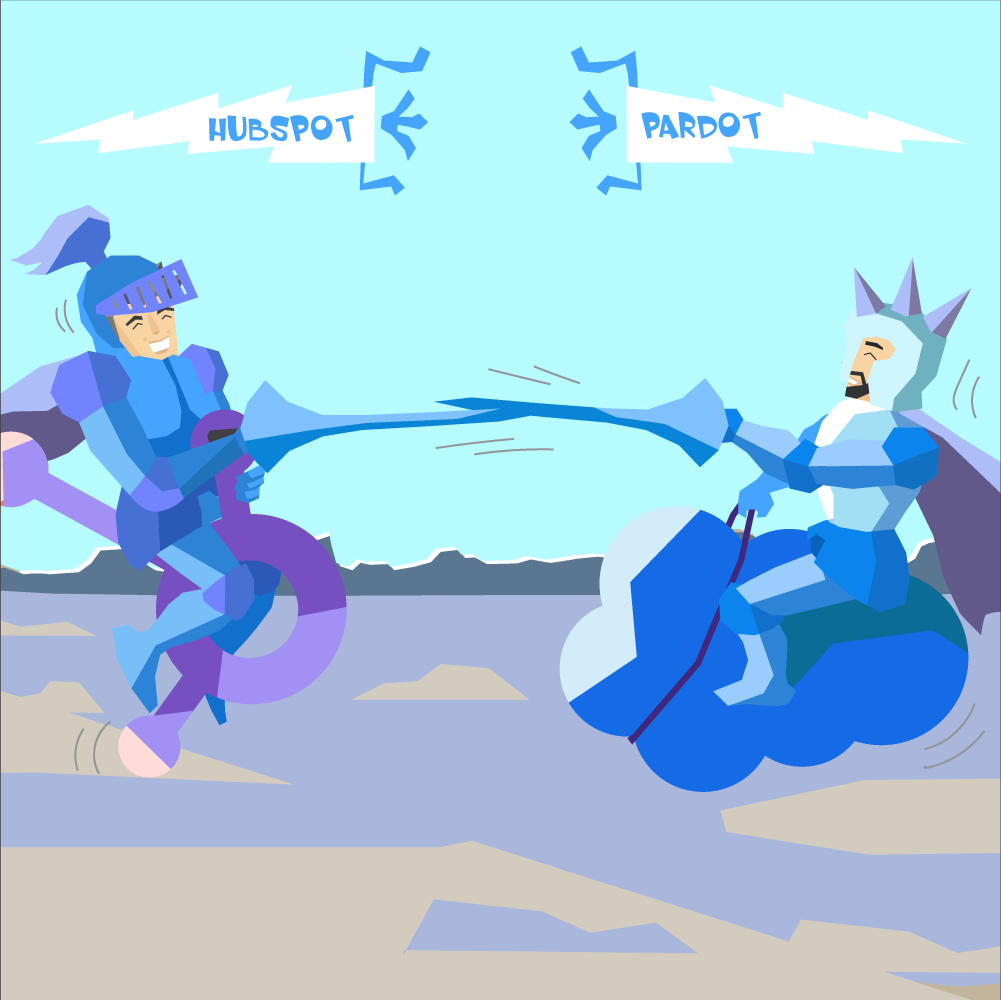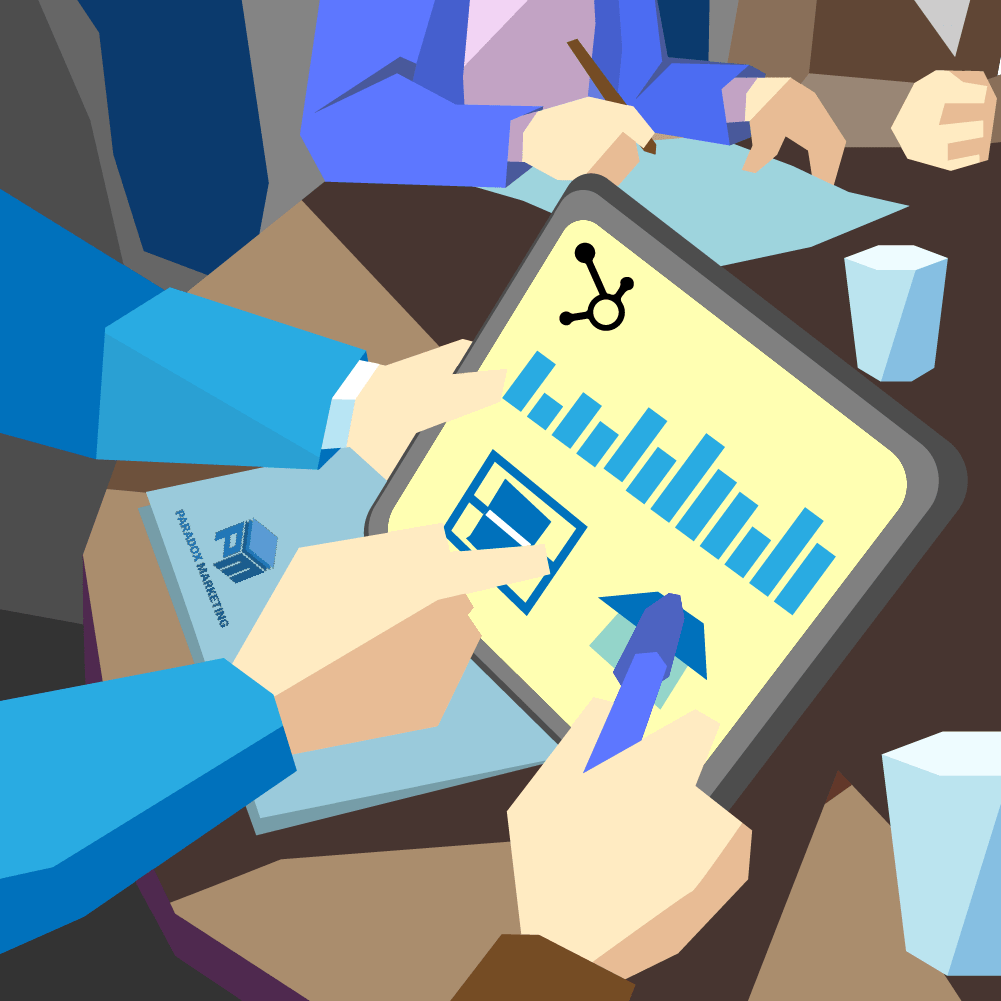HubSpot Sidekick Changed Its Name To HubSpot Sales – What This Means For You

In 2013, HubSpot Sidekick was launched. At the time, it was more of an experiment than anything, yet its popularity grew massively over the next couple of years.
Sidekick was built to provide sales personnel with in-depth email tracking analytics and email automation tools. However, in 2016, HubSpot decided to rebrand Sidekick, changing it into HubSpot Sales.
Why Did They Change The Name?
It wasn’t so much that the name changed from Sidekick to HubSpot Sales, it was more that the application was absorbed by HubSpot Sales. HubSpot made the decision to expand further and to become an inbound marketing and sales platform. Sidekick focused solely on email tools. HubSpot Sales was built to be an all-in-one sales platform, which means that in addition to email productivity features, it also boasts meeting scheduling, live chat, phone support, sales automation, quotes, Salesforce integration, predictive lead scoring, recurring revenue tracking, and much more (depending on which platform tier you purchase).
Once HubSpot decided to expand its offerings, there was no point in still having Sidekick available since its features would be offered in more comprehensive sales platform packages, and so Sidekick was essentially absorbed into HubSpot Sales. The reason that HubSpot ditched the name altogether was to emphasize the HubSpot brand as well as to enforce the fact that their new platform was no mere sidekick–instead, they wanted it to become a sales platform known for being essential to a company’s success.
Sidekick’s Previous Functionality
Sidekick focused mostly on email-related functionality. Although innovative and groundbreaking at the time, the features Sidekick offered have become somewhat commonplace (although still vital to the success of email-related marketing and sales efforts). The following are the main features that Sidekick offered:
Email Open And Click Tracking
Sidekick allowed users to track their emails and to identify which emails were opened by their recipients and which ones weren’t. This allowed the user to determine what emails had the best open rates, and what types of content and subject lines had the biggest impact on email recipients. Users could adjust their email strategy for greater success based on past performance. Sidekick even allowed users to uncheck any emails they didn’t want to track. Another benefit of the feature was that users could see whether recipients opened urgent emails or not, allowing them to follow up if they had to.
Email Scheduling
One of the most useful features offered by Sidekick was its email scheduling tool. This early automation tool allowed users to compose emails and then automatically schedule those emails to be sent out at a certain time. Users could write several emails at a time to be sent out at a later date, which made things much more efficient and less time-consuming. It also allowed users to schedule their emails to be sent at specific times of the day when their recipients were most likely to see and open them.
Organized Contact Profiles
Sidekick made it possible for users to organize and access their contact information much more effectively. Users would have easy access to their contacts’ past contact history, mutual connections, social media content, and more from a single location. Not only did this reduce the amount of time spent searching for contact details, but it made it easier to personalize emails, improving both click-through rates and conversion rates.
What Hubspot Sales Offers Now
HubSpot Sales is a platform that offers everything Sidekick featured and much more. It’s available in four different tiers, including a free package (which can be upgraded as you need more advanced tools for your sales department). Some of the features the HubSpot Sales platform provides follows:
Automate Personalized Email Sequences
Using HubSpot Sales, you can create a sequence of personalized emails that are scheduled to be automatically sent out at specific times. For example, if a customer bought a specific product, you can automate an email sequence that includes a “Thank You” email, an email that provides information about how that product can be used, an email suggesting similar products, and an email providing a discount for a similar (or the same) product. Nurturing prospects and customers becomes much easier and more efficient when you’re able to both personalize and automate entire email sequences.
Make Flawless Follow – Ups
In addition to automating personalized email sequences, you’ll also be able to set up notifications for when your prospects open up their emails, clicks on links, or opens up attachments. This allows you to follow up with another timely email.
Create And Share Email Templates
You can create different email templates to help stand out from other businesses and track the performance of these templates. You can compare them to one another, choose the ones that perform the best, and then share them with the rest of your team.
Land More Meetings
HubSpot Sales offers a live chat feature that you can install onto your website. This makes it possible to connect directly with prospects. This can help eliminate a number of challenges when it comes to scheduling meetings, such as endless back and forth emails and missed calls. Instead, you can just send a link to your prospect directly through live chat that lets them choose a meeting time convenient for everyone involved.
Close More Deals
Because of HubSpot Sales automation features, such as lead rotation, task creation, and more (even email opens and clicks will be automatically logged), you won’t have to waste time on manually entering lead contact information. Your team can focus more of their time on actually closing deals.
Track Your Entire Pipeline
You can sync your HubSpot Sales platform with the HubSpot CRM platform, allowing you to track deals that you’ve won, lost, and that are currently in progress. You’ll even be able to identify which of your sales representatives are performing the best.
Mobile Access
HubSpot Sales subscribers have access to their mobile app. This means that you can run your sales process while on the road, have conversations with your prospects and customers from anywhere, and measure performance (such as checking your email engagement reports) from your phone.
Pricing: What’s Changed?
Sidekick was available in two versions–a free version that limited email tracking to 200 emails a month–and a premium version. HubSpot Sales is also available as a free version; however, there are three other tiers available as well, including starter, professional, and enterprise.
Free Version
Despite not costing a cent, the free version of HubSpot Sales, which is built for the individual salesperson, still comes loaded with helpful features for sales teams, including:
- Calling
- Canned snippets
- Company records
- Contact and company insights
- Contact management
- Conversational bots
- Conversations inbox
- Deals
- Documents
- Email templates
- Email tracking and notifications
- Email scheduling
- Gmail and Outlook integration
- Live chat
- Meeting scheduling
- Prospects
- Reporting dashboards
- Tasks
- Team email
Starter
The HubSpot Sales Starter version is built for sales teams and is available starting at $50 a month for one user. In addition to including all the features of the Free version, the Starter version also offers the following:
- Conversational routing
- Email sequences
- HubSpot branding removed
Professional
The Professional version of HubSpot Sales starts at $400 a month for five users. Built for advanced sales teams, this version includes every feature that the Starter version offers in addition to multiple AI, automation, and custom reporting features, including the following:
- Custom reporting
- Multiple currencies
- Multiple deal pipelines
- Phone support
- Products
- Quotes
- Required fields
- Salesforce integration
- Sales automation
- Smart notifications
- Smart send times
- Teams
Enterprise
The last and most advanced version of HubSpot Sales available is the Enterprise version, which starts at $1,200 a month for ten users. Its extensive set of features includes everything that the Professional version offers, as well as the following:
- Calculated properties
- Call transcription and reporting
- eSignatures
- Goals
- Playbooks
- Quote approvals
- Predictive lead scoring
- Recurring revenue tracking
- Single sign-ons
Conclusion
Those who used HubSpot Sidekick in the past likely remember how helpful its features were for email tracking and scheduling. However, there’s no reason to lament its demise–it was replaced with a much more robust platform in the form of HubSpot Sales, which has far more sales tools to take advantage of–even if you just sign up for the free version.









